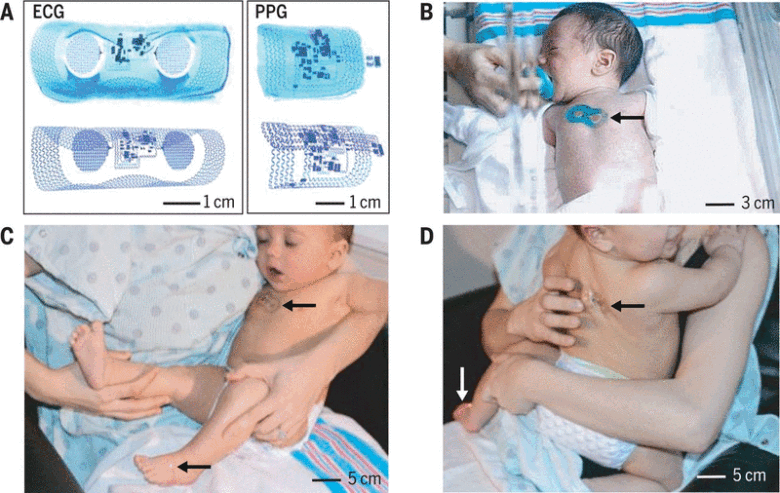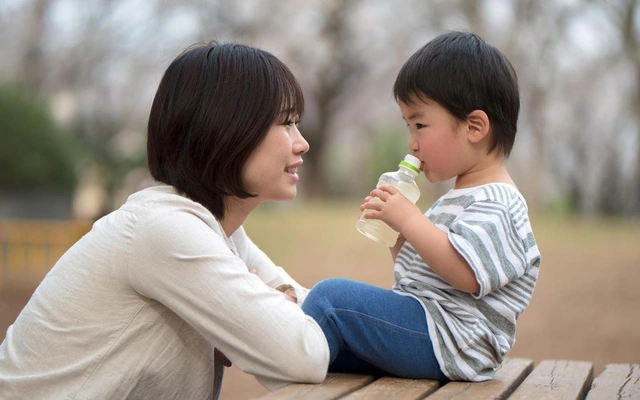The realm of infant care has witnessed dramatic transformations throughout history. This sector has constantly evolved from ancestral lullabies and swaddling techniques to mid-20th-century innovations like disposable diapers, reflecting societal changes and scientific advancements. However, in the past thirty years, these shifts have been turbocharged by the rapid evolution of technology. From the dawn of the Internet to the rise of artificial intelligence, technological developments have permeated all facets of life, and infant care has been no exception.
The Infancy of Digital Technology in Infant Care (1990s)

Source: science.org
In the 1990s, the infancy stage of digital technology marked its first steps into the domain of infant care. This period was marked by the emergence of electronic toys and learning devices designed specifically for infants. These devices, with their colorful displays and interactive elements, were designed to entertain and promote early cognitive and motor development.
The use of the early Internet for research on infant care
Simultaneously, the early Internet emerged as an indispensable tool for parents. It served as a hub for knowledge, offering a wealth of research materials and articles on infant care. Parents began turning to this digital platform for advice and insights, marking a significant shift in how parenting knowledge was accessed and shared.
Baby Einstein and other early electronic learning tools
A notable pioneer of this era was Baby Einstein, an early electronic learning tool that embodied the promise of this new digital age. With its emphasis on introducing babies to music, language, and art in engaging multimedia formats, Baby Einstein revolutionized the concept of early learning. It demonstrated that technology could enrich infants’ lives, paving the way for countless future innovations in infant care. Through these advancements, the 1990s set the stage for the digital transformation that was yet to come in the field of infant care.
The Rise of the Digital Nanny (2000s)

Source: afamily.vn
The dawn of the 21st century heralded the era of the “Digital Nanny,” fundamentally transforming the dynamics of infant care. Foremost among these changes was the emergence of digital monitors for baby monitoring. These devices, capable of audio-visual surveillance and even vital sign tracking, brought an added level of security to anxious new parents, enabling them to keep a close eye on their babies without being physically present at all times.
The widespread use of the Internet ushered in a wealth of digital resources for parental education and support. Parents now had the option to attend virtual classes, engage in online parenting communities, and access a plethora of advice from experts and fellow parents alike at the click of a mouse. This democratization of knowledge significantly aided parents in making more informed decisions regarding their infants’ care.
A case in point during this time was the Baby Monitor 3G app. As one of the first to leverage the power of the smartphone, this app allowed parents to monitor their baby’s activities from anywhere, transforming the concept of baby monitoring. It empowered parents with real-time video, audio, and sleep-tracking data, offering peace of mind and flexibility in their busy lives. The impact of the Baby Monitor 3G app was profound, setting a precedent for countless other applications that followed suit.
Smart Technology and Infant Care (2010s)
As we moved into the 2010s, the symbiosis between infant care and technology deepened with the advent of smart technology.
A greater understanding of infant nutrition also influenced the market. Manufacturers began incorporating probiotics, DHA, and other nutrients vital for infant growth into their products. Through these improvements, the baby food industry in the 2010s was able to offer a broader range of high-quality, nutritionally optimized products designed to meet the specific needs of infants and toddlers. At this time, the demands of parents are changing significantly as a reflection of the development and improvement in the quality of baby food; for more details, check Organic’s Best. And as a result of these dynamics, super-popular smart baby bottles, wearable baby monitors, and smart cribs have become the latest innovations. These devices have revolutionized infant care by providing enhanced safety measures, data-driven information, and the promise of making parenting more manageable.
Simultaneously, Artificial Intelligence (AI) began to play a prominent role in infant care. Devices incorporated AI for various purposes, from sleep training, where AI would interpret a baby’s sleep patterns and adjust the environment accordingly, to feeding, where smart bottles could measure and analyze an infant’s nutrition intake.
Perhaps the most iconic application of smart technology and AI in this era was the SNOO Smart Sleeper. This responsive bassinet used AI algorithms to respond to a baby’s cries, automatically rocking and soothing the infant back to sleep. In doing so, SNOO not only improved infant sleep patterns but also drastically reduced parental stress, enhancing overall well-being. By combining high-tech sensors, AI, and an understanding of infant needs, the SNOO Smart Sleeper served as a testament to the potential of smart technology in improving infant care and parental peace of mind.
The Future of Infant Care: AI and Beyond (the 2020s and beyond)
Source: futurelearn.comAs we venture into the 2020s and beyond, the boundaries of what technology can offer to infant care continue to expand, particularly in harnessing the power of Artificial Intelligence (AI). AI’s ongoing evolution promises intriguing infant care potential, from AI-based virtual assistants for parents to predictive infant healthcare.
AI-based virtual assistants for parents are on the horizon, envisaged as personalized, intuitive tools to offer real-time advice and support. These intelligent systems could answer queries, suggest solutions based on past behavior, or offer comfort and company during those sleepless nights.
Furthermore, AI is expected to play an instrumental role in predicting and preventing potential infant health issues. Advances in machine learning and predictive analysis allow for early detection of developmental delays or health risks, guiding timely intervention and, consequently, improving health outcomes.
The realm of AI and technology in infant care remains a vast frontier. As AI continues to evolve, so will its applications in infant care. While it’s difficult to predict what these applications will look like, they will undoubtedly continue to shape the landscape of infant care in profound ways, combining state-of-the-art technology with the timeless aim of nurturing and caring for our youngest generations.
Conclusion
The past three decades have seen a monumental shift in infant care practices, largely propelled by the unstoppable wave of technological innovation. From the earliest digital learning tools to the present-day integration of Artificial Intelligence, technology has continually reshaped our approach to nurturing the youngest members of our society.
However, as we forge ahead into this brave new world, it is crucial to consider the potential concerns and ethical considerations accompanying this rapid evolution. The role of technology in infant care must be thoughtfully balanced, ensuring it supports rather than supplants the irreplaceable human touch that is fundamental to infant development. In this context, the challenge lies in what technology can achieve and how we, as a society, navigate its implementation to serve our children’s needs best.




